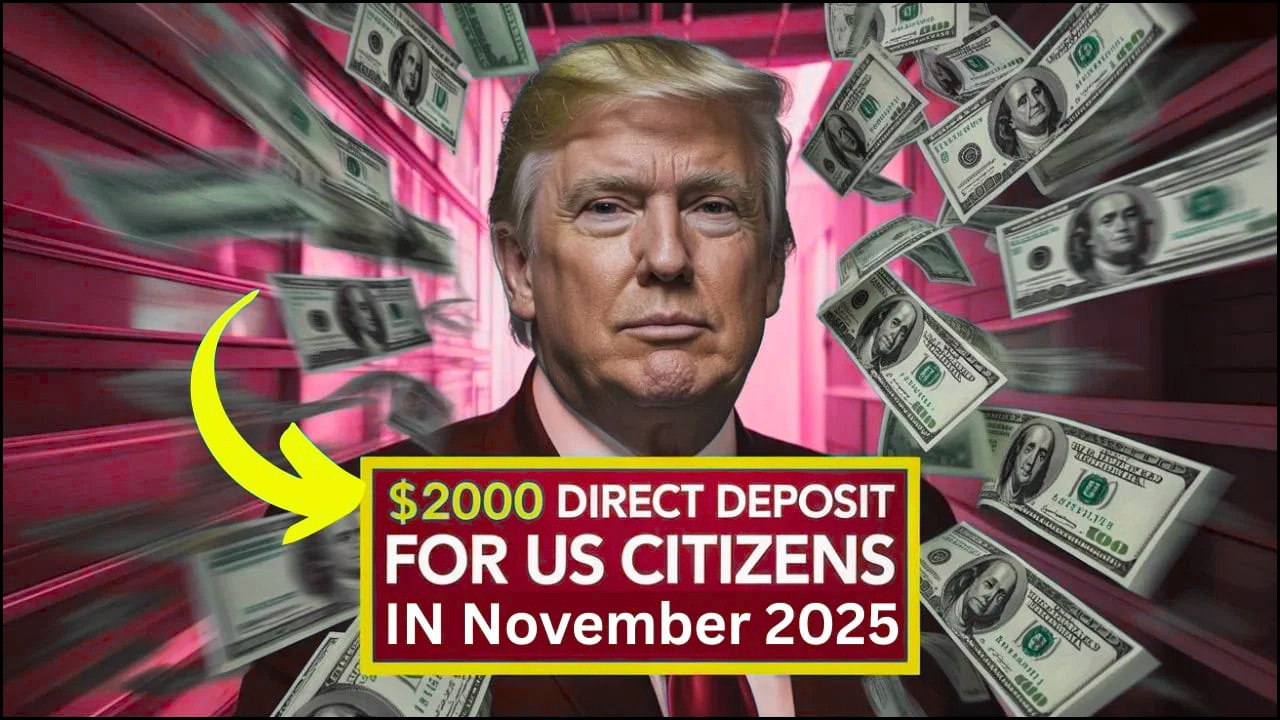The U.S. government has officially announced a $2,000 direct deposit payment for eligible citizens in November 2025, bringing timely financial relief to millions of households. As everyday costs like food, rent, and healthcare continue to rise, this payment aims to help Americans manage their expenses more comfortably.
The Internal Revenue Service (IRS) is handling the rollout of the program, ensuring that funds reach eligible taxpayers, Social Security recipients, and veterans directly into their accounts. Below is a detailed breakdown of who qualifies, when the payments will be sent, and how to make sure you don’t miss out.
Understanding the $2,000 Direct Deposit
The $2,000 direct deposit is a one-time financial assistance payment designed to support Americans facing financial strain due to inflation and slower economic recovery. Although it is not officially termed a “stimulus check,” the intent remains the same — to provide quick monetary aid to those in need.
The IRS has stated that these payments will be distributed directly into eligible recipients’ bank accounts or mailed as checks, depending on the information available in federal records. Beneficiaries of Social Security (SSI and SSDI), Veterans Affairs (VA) programs, and low-income families are expected to be among the first to receive it.
Overview
| Program Name | $2,000 Direct Deposit Relief 2025 |
|---|---|
| Administered By | Internal Revenue Service (IRS) |
| Payment Amount | $2,000 (one-time payment) |
| Payment Type | Direct Deposit / Paper Check |
| Distribution Period | November 15 – 29, 2025 |
| Eligibility | Based on income, tax status, and citizenship |
| Official Website | www.irs.gov |
Eligibility Requirements
To qualify for the payment, individuals must meet certain income and residency requirements as set by the IRS. Here’s a summary of who is eligible for the full benefit:
- Single taxpayers earning $75,000 or less annually.
- Married couples filing jointly with a combined income of up to $150,000.
- Heads of household earning $112,500 or below.
If your income exceeds these limits, you may still get a partial payment, as the benefit amount gradually decreases for higher earners.
Certain groups will automatically receive the $2,000 deposit without needing to file a separate application, including:
- Social Security (SSI and SSDI) recipients
- Veterans Affairs beneficiaries
- Low-income families receiving SNAP or other federal assistance
All recipients must be U.S. citizens or lawful permanent residents and hold a valid Social Security Number (SSN) or Individual Taxpayer Identification Number (ITIN).
Key Dates and Payment Schedule
The IRS has confirmed that payments will begin rolling out in mid-November 2025 and will continue in batches until the end of the month. The distribution process will follow this estimated timeline:
| Payment Method | Estimated Date Range | Details |
|---|---|---|
| Direct Deposit | November 15 – November 29, 2025 | Sent directly to registered bank accounts |
| Paper Checks | Starting November 25, 2025 | For individuals without direct deposit setup |
| Social Security & VA Recipients | Mid-November 2025 | May receive earlier based on their usual payment schedule |
Citizens are encouraged to verify that their bank account and mailing details with the IRS or SSA are accurate to prevent payment delays.
Steps to Secure Your Payment
The IRS will automatically send payments to those who qualify based on 2023 or 2024 tax return data. To ensure your $2,000 payment is not missed or delayed, follow these steps:
- File your most recent tax return if you haven’t already, even if your income is low.
- Update direct deposit details on your IRS account once the payment portal opens.
- Check your payment status regularly on the official IRS website.
- Stay alert for scams – The IRS will never call, text, or email asking for banking or personal information. Always rely on official government sources.
Why the $2,000 Direct Deposit Matters
This one-time $2,000 payment aims to help Americans manage financial challenges and rising expenses. For many families, it could mean covering essential costs such as groceries, rent, bills, and medical care.
The timing of the payment—just before the holiday season—also offers additional relief during a period when household spending typically increases. Economists believe this move will not only ease financial burdens but also help strengthen consumer confidence and stabilize local economies heading into 2026.
Final Note
The $2,000 direct deposit program demonstrates the government’s continued efforts to help Americans face economic challenges with stability and confidence. Whether you are a retiree, veteran, or working family, this payment can bring meaningful support when it’s needed most.
Make sure your tax filings and banking information are current to ensure a smooth deposit process. For verified updates, visit the official IRS website at irs.gov.
FAQs
1. Who qualifies for the $2,000 direct deposit?
Any U.S. citizen or lawful resident meeting the IRS income criteria qualifies. Social Security, SSI, and VA beneficiaries are automatically included.
2. When will the payments arrive?
Payments will be released between November 15 and November 29, 2025, depending on your method of payment.
3. Do I need to apply to receive the $2,000 payment?
No application is required. The IRS will process your payment automatically using your tax or benefit information.
